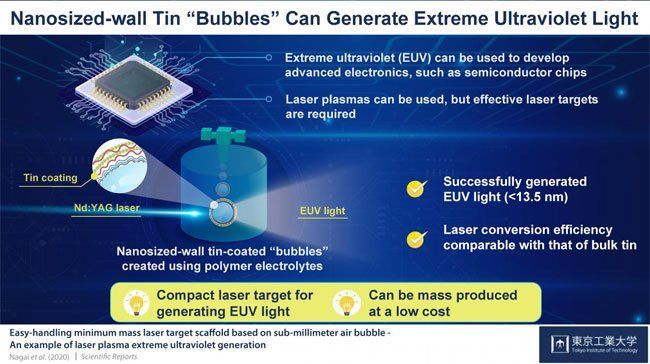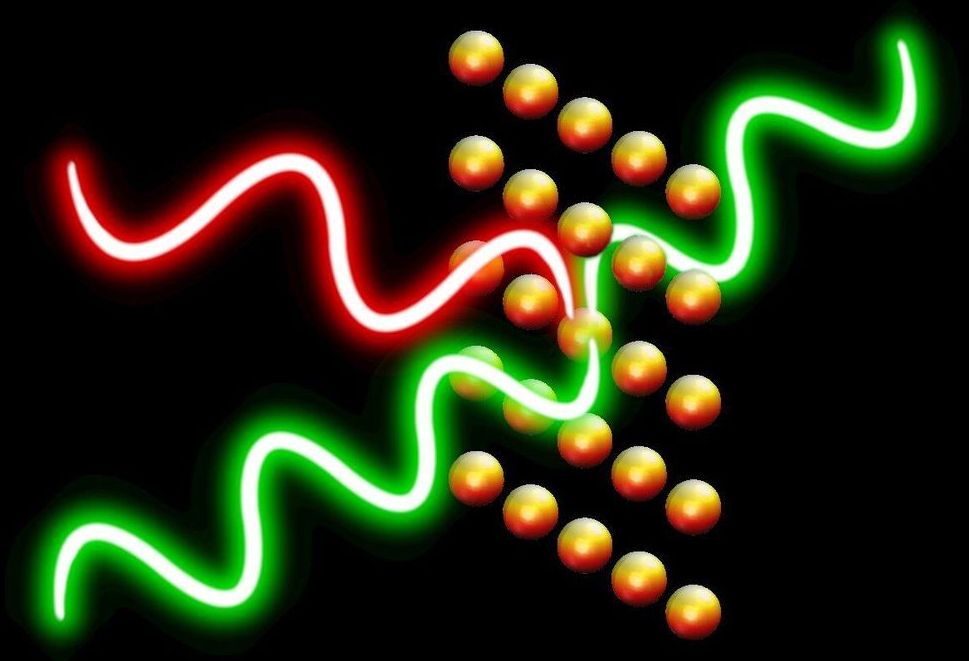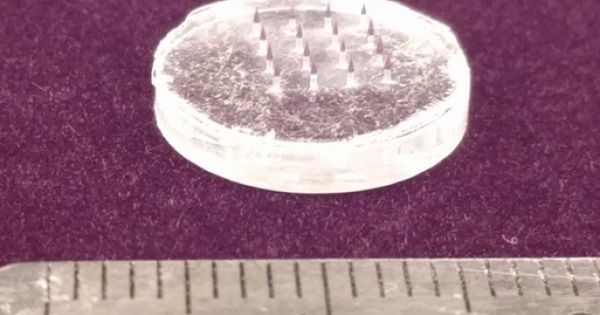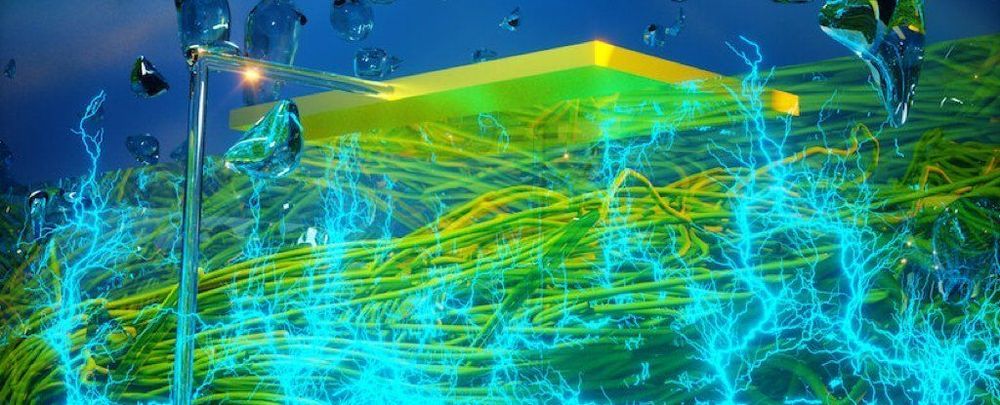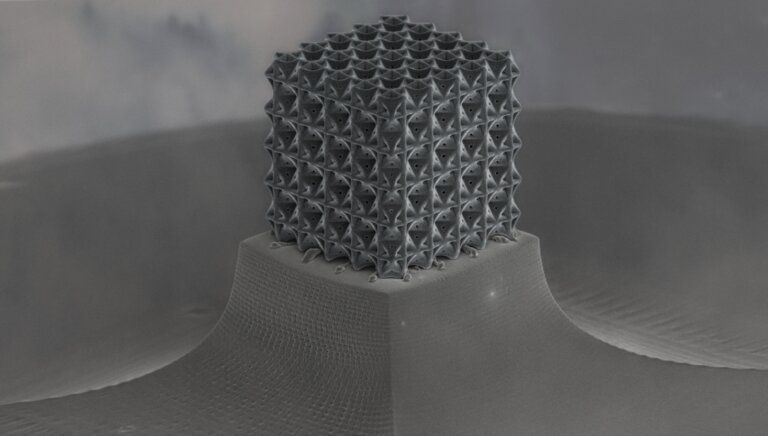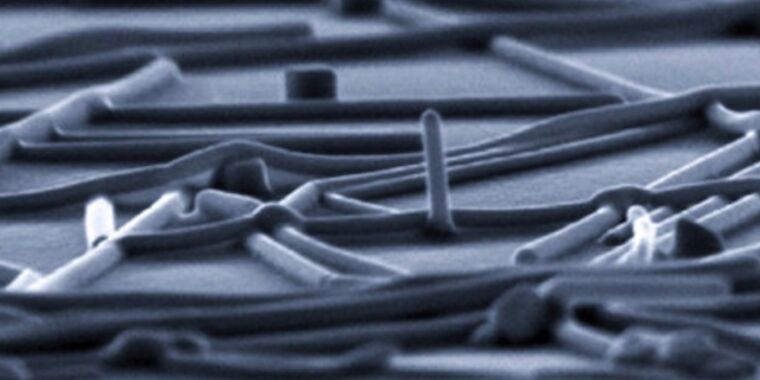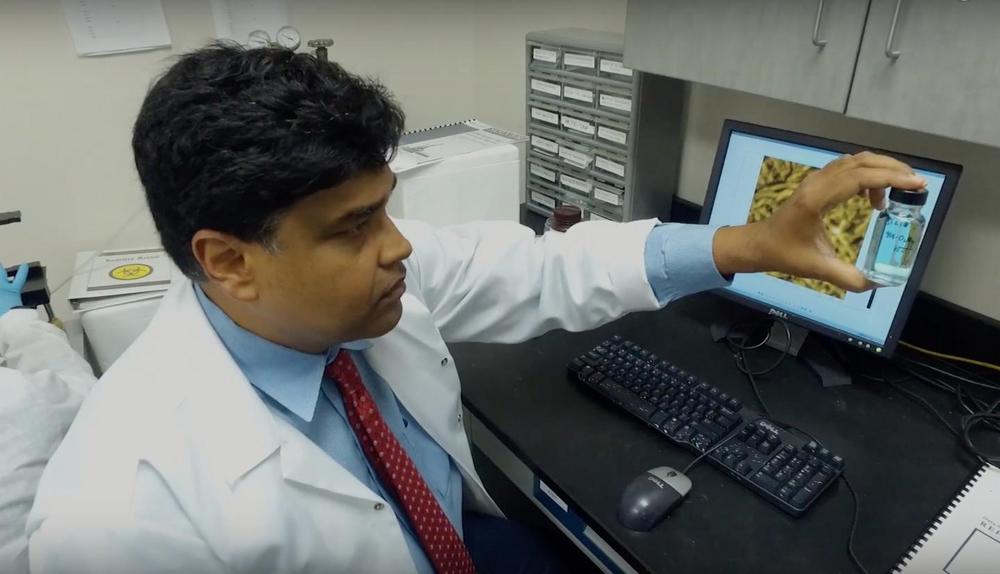Scientists at Tokyo Institute of Technology (Tokyo Tech) have generated low-cost extreme ultraviolet (EUV) light by creating tin thin-film spheres using a polymer electrolyte “soap bubble” as a template and irradiating it with a laser.
#EUV #photonics
The team from Tokyo Tech, working with colleagues from University College Dublin, set out to find efficient, scalable, low-cost laser targets that could be used to generate EUV. The scientists created a tin-coated microcapsule or “bubble” — a low-density structure weighing as little as 4.2 nanograms and with a high level of controllability. For the bubble, they used polymer electrolytes, which are a dissolution of salts in a polymer matrix. The salts act as surfactants to stabilize the bubble.
The scientists coated the bubble with tin nanoparticles. “We produced polyelectrolyte microcapsules composed of poly(sodium 4-styrene-sulfonate) and poly(allylamine hydrochloride) and then coated them in a tin oxide nanoparticle solution,” professor Keiji Nagai said.
To test the bubble, the scientists irradiated it using a neodymium-YAG laser. This resulted in the generation of EUV light within the 13.5-nm range. The team further found that the structure was compatible with the conventional EUV light sources that are used to manufacture semiconductor chips.
